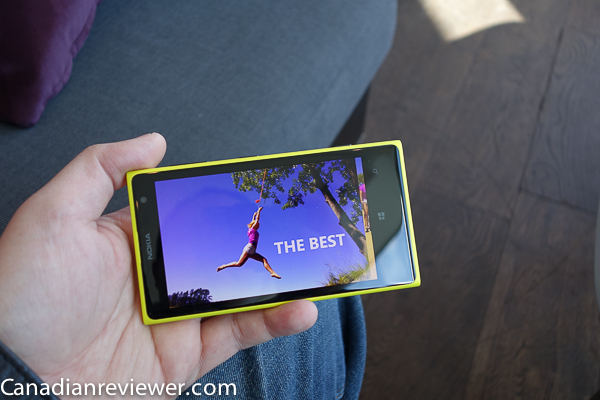 Text and photos by Gadjo Cardenas Sevilla
Text and photos by Gadjo Cardenas Sevilla
Nokia's Lumia 1020 is an amalgamation of the best features that Espoo, Finland's mobile icon has to offer. This device showcases all the refinements that Microsoft's Windows Phone 8 OS delivers in a handset, while leapfrogging the status quo in cameraphones with a jaw dropping 41-Megapixel camera accompanied by some of the best camera software we've seen on any device.
The Lumia 1020 is coming to Canada to TELUS and Rogers early October. It will also be available in Microsoft Stores and Kiosks in Canada.
Nokia, whose mobile business just got acquired by Microsoft for $7.2 billion, has really been working double-time to push Windows Phone forward as a viable and competitive mobile platform.
The Lumia 1020 is the pinnacle of a long journey and difficult transition from its Symbian roots to something new and untested. This journey began in earnest with the Lumia 800 and then evolved on to bigger and better things with the Lumia 900, Lumia 920 and finally the Lumia 1020.
The look, feel and personality of the earlier Lumias are clearly evident in the latest flagship. The 1020 is, however, all about refinement. It is lighter and more streamlined than last year's Lumia 920 but still retains the monocoque solidity and tank-like build quality that Nokia's only improved through time.

The Lumia 1020 takes an improved version of the 41-megapixel sensor from the 808 PureView Symbian smartphone (possibly the last, great Symbian device) and puts that 5-year-in the making technology in a lighter, thinner and overall more capable handset running a modern mobile OS.
When talking about the Lumia 1020, I almost feel like I am talking about two devices. The most impressive cameraphone and the best Windows Phone in the market today.
Design
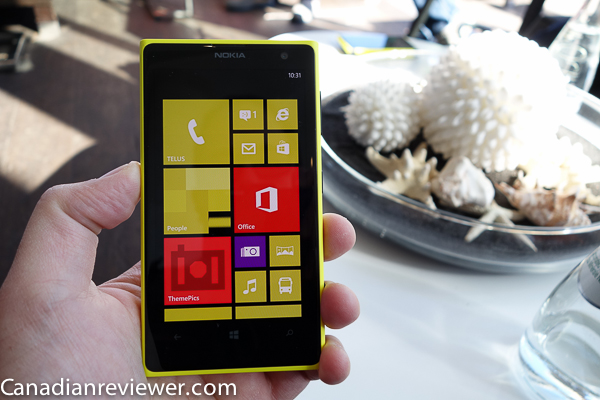
The Lumia 1020 is built from a single piece of polycarbonate and Nokia says that it is the same composite used in hockey helmets. This is a tough smartphone, one that can be used to drive nails through a wooden plank. Nokia cleverly disguises the 1020's burly side by offering it in bright and happy colours which, while completely a matter of personal preference, do tend to grow on you.
Nokia stands alone in how it crafts plastic to such an exacting degree of solidity and the overall feel of the Lumia 1020 is one of quality and clever execution.
The bright canary yellow colour of my Lumia 1020 has an almost powdery texture, except for the smooth corners which are quite slippery. The Gorilla Glass covering the 4.5-inch display is now thinner but still feels rock solid. The entire case has no protrusions whatsoever and gives the impression of a seamless and well engineered design.
The screen is vivid and readable in all lighting conditions, it is one of the better AMOLED displays around, and doesn't give off sickly, oversaturated colours but rather maintains a high degree of contrast and vibrance.
There's still a tinge of the cartoonish quality we've come to expect from AMOLED screens, and the playful look and feel of Windows Phone 8 sort of adds to this slightly animated look.
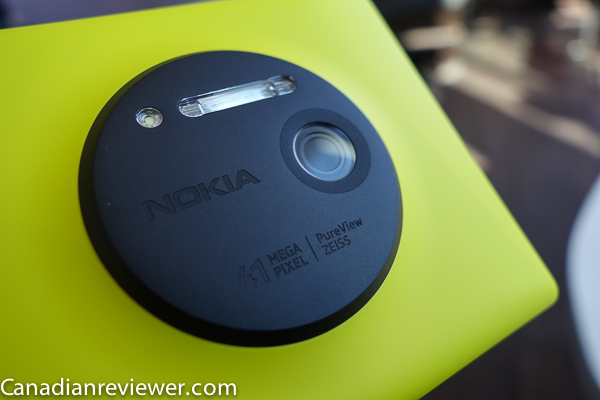
The Lumia 1020 feels good in the hand, but is a bit on the wide side. The slippery edges are something to get used to, thankfully there's a small receptacle for a lanyard which should be put to good use, specially when using the Lumia 1020 as a camera, the way it was intended.
Performance
The Qualcomm Snapdragon S4 dual-core processor, 2GB of RAM both work in tandem to produce a smooth and rather zippy Windows Phone 8 experience. You won't get any complaints about the Lumia 1020's speed and ability to multi-task as it will manage all these easily.
There's a standard 32GB of storage plus an additional 7GB on SkyDrive for offloading photos, as well as backing up files. A sizeable 2000 mAh battery ensures that you get a day or so of basic smartphone use but I quickly dried this up shooting photos and videos.
Call quality is superb with excellent voice quality and noise isolation. This was true with hands-free calls as well. 4G-LTE reception on TELUS was on par with most smartphones I've tested on that network.
All the latest technology is available on the Lumia 1020, NFC (Near Field Communication) which Nokia's had for some time now, can be used to pair with bluetooth speakers and devices. A neat clip-on case adds wireless charging capability, something the Lumia 920 had built-in, but which no doubt added bulk on that model.
Camera
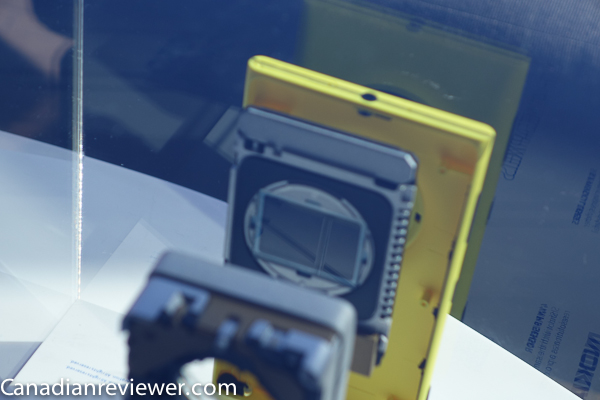
The big innovation is really the 41-megapixel camera. This isn't a silly gimmick. Nokia really did develop a 41-megapixel camera featuring a 1/1.5" large, very high resolution image sensor with high performance Carl Zeiss optics that bring an f/2.2 focal ratio and an innovative form of optical image stabilization.
The large sensor enables pixel oversampling, which means the combination of many sensor pixels into one image pixel.
This also results in lossless zoom where you can crop any photo and still get a clear zoom. The strength of this type of camera is that it can capture a staggering amount of information in each photo taken. While this doesn't result in large RAW files, it really reinvents the concept of zooming in yet still getting the best possible shot.
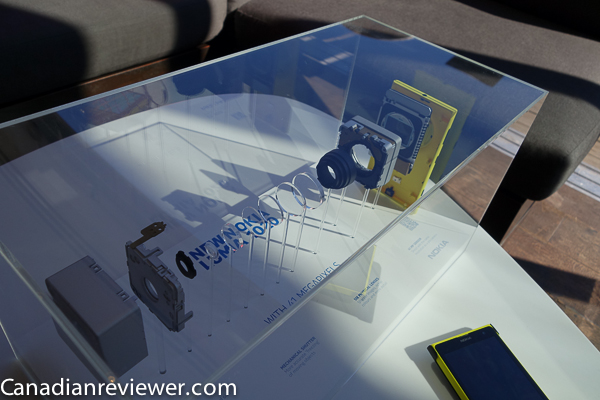
PureView imaging technology delivers high image quality, lossless zoom, and improved low light performance. It dispenses with the usual scaling/interpolation model of digital zoom used in virtually all smartphones. In both video and stills, this technique provides greater zoom levels as the output picture size reduces, enabling 4x lossless zoom in full HD 1080p video, 6x lossless zoom for 720p HD.
All of this great hardware really doesn't mean much if it is impossible to use. That's why I believe the best feature of the Lumia 1020 is the suite of apps like Pro Camera App and Smart Camera App that enable any user to quickly take full advantage of the camera's functions.
The Lumia 1020's camera is simply phenomenal. Even in full-auto mode, it manages to capture images accurately and with an unprecedented amount of detail and subtlety. You can get by with the touch-to focus function on the screen and still get some stunning images. But why stop there.
With the Camera Pro app, every user is given access to an almost DSLR-like level of photographic control and not only will they learn about exposure, shutter speed and aperture; they will also be able to alter their images in real-time thanks to the touchscreen aspect. The Xenon flash, another first in a smartphone, completely eclipses other devices we've tried in terms of coverage and brightness.
Shooting photos and videos with the Lumia 1020 is fun, easy, and highly rewarding. The synergy between hardware and software is simply astonishing, and you'll soon try to find various situations to shoot more and more photos. With the battery and grip accessory, the Lumia 1020 feels very much like a bona-fide point and shoot but the resulting photos are unmistakably of DSLR-level quality and will make great prints.
Video quality is equally broundbreaking. I used the Lumia 1020 to cover the iPhone 5c and 5s launch and was simply blown away at the quality of the video. The out of the box setting feels a bit too dark, but this can be easily adjusted.
I opted to leave my Sony and Olympus cameras behind during a recent trip and took the Lumia 1020 and the battery grip (which also adds battery life), I couldn't have been happier.
While shooting with standalone cameras and great lenses does yield some spectacular images and a high degree of control, the smartness and compact power and precision of the Lumia 1020 simply changes the game, not just for mobile photography but for all photography.
Conclusion
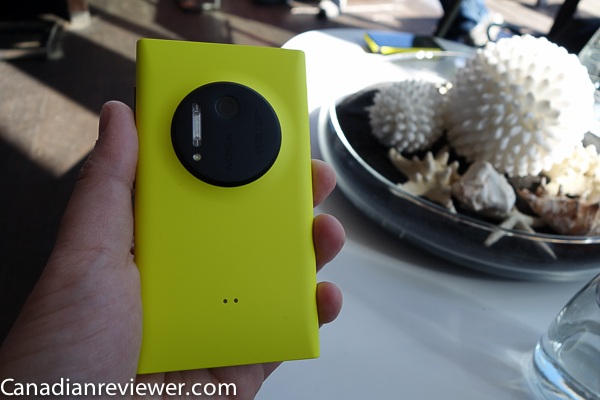
Is the Lumia 1020 the best camera on a smartphone? Quite possibly.
That is, if you're willing to take time and compose, measure, and be deliberate with your photography. The Lumia 1020 isn't a snap-shooter, it isn't anywhere as fast as competing smartphone cameras, and the shot-to-shot performance isn't at all near the blazing speed offered by the iPhone 5s (or even the iPhone 5 with iOS 7).
The large 41-megapixel sensor isn't built for speed, it is built for accuracy, and jaw-dropping detail and unparalleled zoom capability. Simply put, this is the best camera on a phone for photographers who'd rather take one iconic image than dozens of good photos.
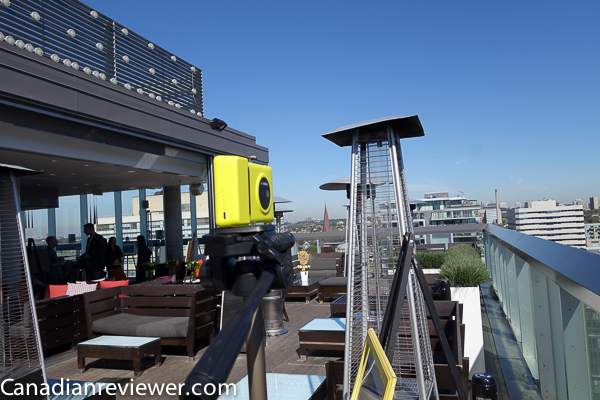
How iconic? Look at the photos taken by National Geographic photographer Stephen Alvarez. These are print-quality nature photos taken under harsh climate and conditions, yet Alvarez managed to capture various scenes that could have been taken by a professional camera and some prime lenses.
This device is the perfect vessel to bring Windows Phone to the next level. While other Microsoft partners have launched half-hearted handsets, Nokia's really shown a lot of focus in their product offerings. Product evolution is evident and the Lumia 1020 is the best of breed Windows Phone in the market today.
If the Lumia 1020 is to be the last, true Nokia smartphone, then it is a fitting exclamation point to the audacious innovation that we've come to associate with Nokia.
Rating: 4.5 out of 5